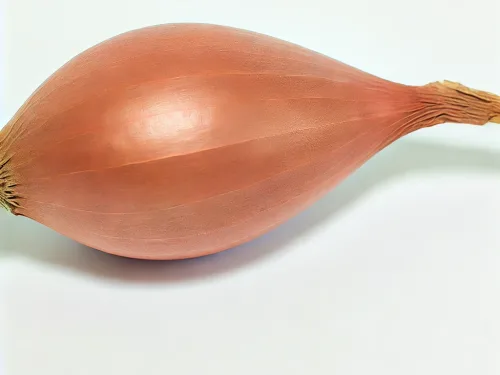A shallot is a bulbous plant belonging to the Allium family, which also includes onions, garlic and leeks. Shallots are smaller than regular onions and have a milder, sweeter flavor.
Shallots are smaller, have a finer texture and a milder, sweeter flavor than onions. They often consist of several small cloves, while an onion consists of a single bulb.
Shallots have a subtle and sweeter taste compared to onions. They are less pungent and have a slight garlic flavor.
Shallots can be used raw in salads, sautéed in butter or oil as a base for sauces, or roasted for a sweet flavor. They are versatile and fit well in both savory and sweet dishes.
Shallots should be stored in a cool, dry and dark place, such as a pantry. Avoid humid environments to prevent mold growth.
Shallots contain antioxidants, vitamins and minerals such as vitamin C, B vitamins and potassium. They have anti-inflammatory properties and can contribute to a healthy immune system.
Cut off the ends of the shallot and make a slit in the skin. Then peel off the skin. It may also help to briefly dip the shallot in boiling water to loosen the skin.
Yes, shallots can be substituted for regular onions, but the taste will be slightly sharper and less sweet. Use about half the amount of onion as a substitute for shallots.
There are different types of shallots, such as the gray shallot, the red shallot and the banana shallot. Each type has its own unique flavor and texture.
Shallots can be planted in spring or fall. They need well-drained soil and plenty of sunlight. Plant the shallot bulbs with the tip up and water them regularly.
Shallots can keep for several months when stored properly. They should be kept dry and cool to prevent spoilage.
Popular dishes with shallots include shallot confit, shallot sauce for steak, French vinaigrette, and roasted shallots as a side dish.



